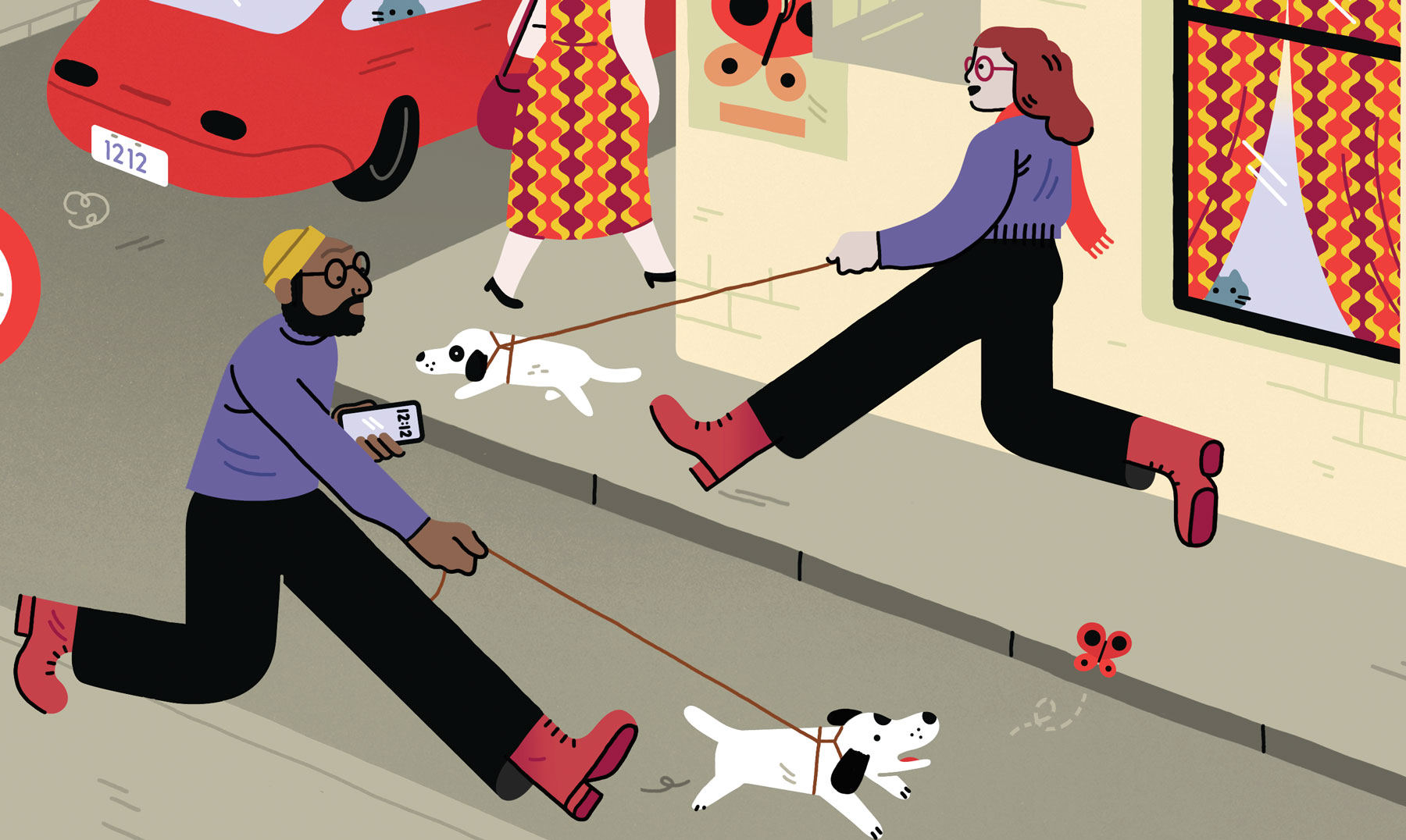
cosmic clues
“Jung was a theoretician,” he says. “I’m a pragmatician trying to make his ideas useful.”
Like the Swiss psychiatrist, Beitman believes mysterious moments are signposts that give clues to how reality works.
“Coincidences like synchronicity and serendipity open doors, encourage possibilities, and link us to grander connections,” says the author or co-author of 96 peer-reviewed journal articles and a visiting professor at the University of Virginia’s Department of Psychiatry.
“I want to look at them to see how they can help us in our regular lives,” Beitman says, “individually, interpersonally, organizationally, and globally.”
Beitman, the former chair of the Department of Psychiatry at the University of Missouri-Columbia, is the child of parents who fled Nazi Germany.
“The Holocaust is deeply inside of me,” says Beitman. “I want to somehow do something to prevent that from happening again. It’s utterly essential for human survival to include what I’m trying to describe in our knowledge base. The more people know about this phenomenon the better off we’ll be.”
Beitman founded the Coincidence Project, which unites kindred minds online. Besides being active on social media, he has a website and YouTube channel. His Psychology Today column is in its seventh year. He is the author of Meaningful Coincidences: How and Why They Happen (Inner Traditions).
In 1972, when Beitman was 31, he lived in San Francisco’s Fillmore District. At the time he was a Coast Guard lieutenant commander and treated hospital patients as alternative service to avoid the Vietnam War draft. At 11 p.m. on Sunday, February 27, he was in his kitchen. He began choking. It felt like something had gotten jammed in his throat, but he had not been eating or drinking. “I didn’t know what was in my throat. I’d never choked for this long before. Finally, after 15 minutes or so, I could swallow and breathe normally,” he says. “The next day, my birthday, my brother called to tell me our father had died in Wilmington, Del., at 2 a.m. He had bled into his throat and choked on his own blood at about the same time I was uncontrollably choking.”
The event changed his thinking about the power of coincidences in our lives.
Beitman calls this simulpathity, a portmanteau term of his own invention which means simultaneous empathy — the feeling of the pain or suffering of a loved one at a distance. At Missouri, he ran a study on coincidences that found at least one-third of participants frequently experienced inexplicable incidents.
Not all coincidences are doorways to revelation, he says. Many have mundane causes, such as random chance, and sometimes people subconsciously arrange for things to happen or see non-existent patterns, a phenomenon called apophenia.Beitman dismisses the notion of divine intervention. “If we think of God as an explanation, there’s no argument,” he says. However, there are many mysteries to be explored.
The Earth, according to Beitman, has a “mental atmosphere.” Just as air, clouds, and electromagnetic radiation move through that realm, ideas, feelings, and behaviors, and human minds inhabit this domain. “We breathe in, metaphorically, energy and information, and we breathe it out. We contribute in a dynamic interchange between our minds and this greater mind, which our minds are a part of,” he says.
Human GPS, the ability to get where you need to be without knowing how to get there, works in tandem with simulpathity to create coincidences, according to Beitman.
“We are fishlike, immersed in the ethereal waters of the psychosphere. Currents move through it,” Beitman has written. “Our interconnected minds may each wander along separately through ordinary space and time, but under the right conditions, often in times of great distress, the limits of space and time are breached, and loving minds find each other again.”
Happenstance fascinates David Spiegelhalter, a University of Cambridge statistician, so much that he has collected more than 5,000 examples at his Cambridge Coincidences Collection website. He says chance explains such events. Spiegelhalter told Beitman, as a podcast guest, that correlation is not causation.
Accustomed to being scoffed at, Beitman shakes off criticism the way he once brushed off would-be tacklers on the football field.
Defending his belief in human communication through an undiscovered mechanism, Beitman points to recent discoveries that some animals have a sixth electromagnetic sense. Migrating birds “see” Earth’s magnetic fields, thanks to cryptochrome photoreceptors in their eyes. Sharks have electroreceptors that help them catch prey. Quantum physics also may help explain coincidences, according to Beitman, who notes that physicists have shown that particles far apart can be entangled, and when one changes, the other also does so, faster than the speed of light. That nature often repeats patterns, as illustrated by fractals, may be a yet additional explanation. Paradoxically, the first cause of the most meaningful coincidences is the person noticing them.
Critics are coming from a fundamental belief about reality that it’s all random, Beitman says. “I don’t believe that the universe and our reality here is fundamentally random,” he says. “I think there’s something else going on, a kind of design we’re here to try to figure out.”